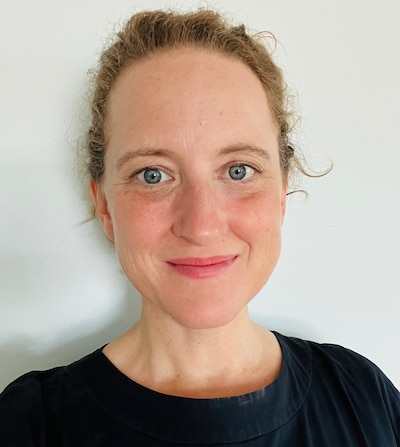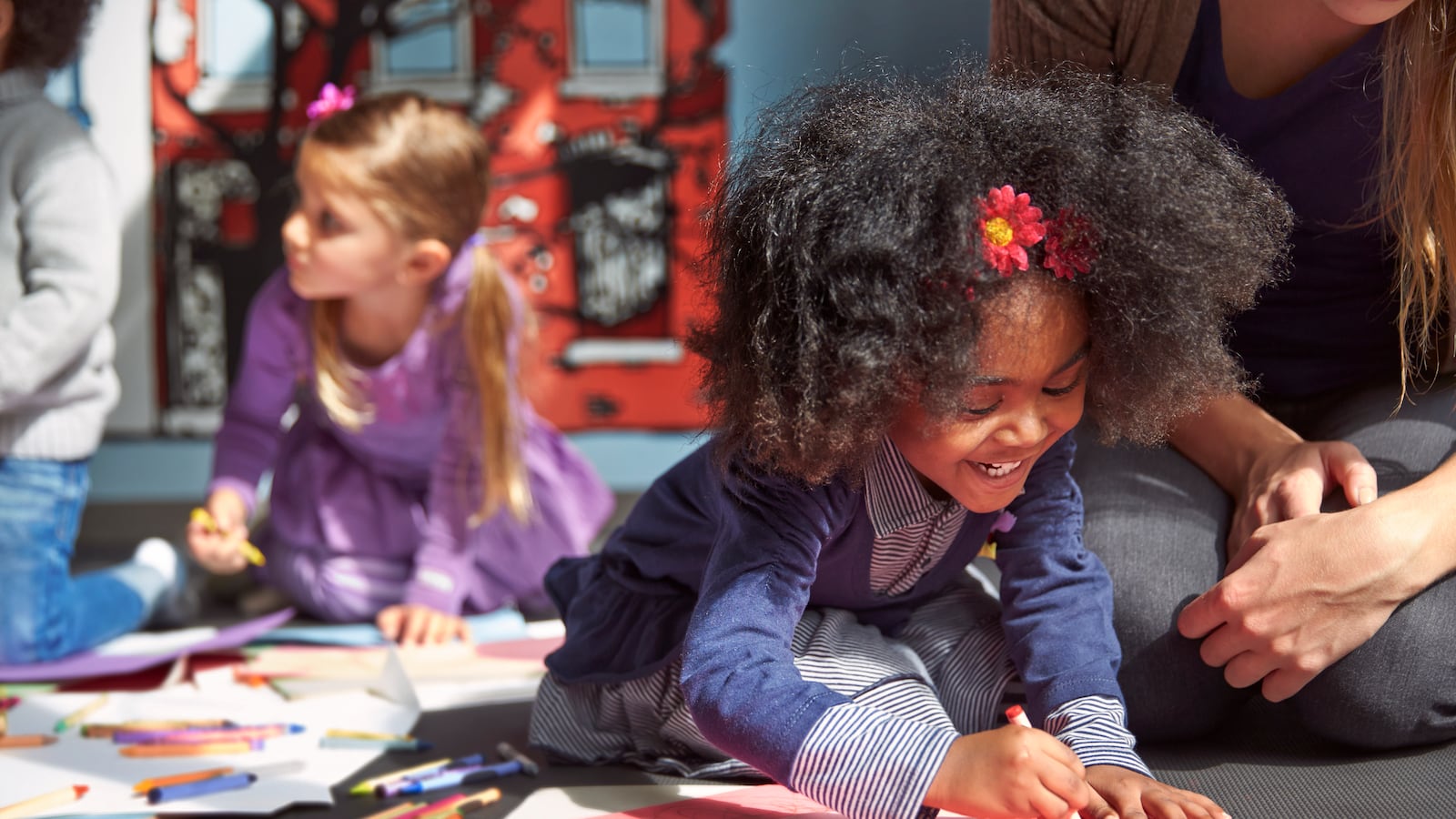Sign up for Chalkbeat New York’s free daily newsletter to keep up with NYC’s public schools.
This past year, a child in my preK class had major surgery and was out for several weeks. When he returned, we transformed a corner of the classroom into a doctor’s office. He played there every day for a week, administering bandages and shots to his curious patients. The nearby water table became a place for friendly witches to mix healing potions. Then he was done, and we closed the doctor’s office.
Supporting children’s healthy development is skilled work. After 25 years of working in early care and education, I continue to learn how to assess children and create responsive plans. To begin, I get to know each child’s family. I want them to feel comfortable sharing their hopes and expectations with me. Each day, I observe children at play, during meals, rest, and transitions, and reflect on what I learned.

I am lucky to have a partner teacher who is a good listener; she creates space for me to consider the various possibilities. Maybe the child is more emotional because it is the end of the school year, and they are nervous about the upcoming transition. Maybe it’s because they have moved recently. Maybe it’s because, as a white teacher of a Black child, I am not seeing their strengths and needs clearly. We are never sure of the answers. The skills are asking questions, observing, and being responsive.
This spring, Eric Adams announced that contracted infant/toddler, 3K, and preK programs in New York City, including in over 8,000 classrooms in district schools, community-based organizations, family child care homes, dual-language, and faith-based settings, will be following one script: Creative Curriculum. Previously, the majority of early childhood programs in New York City, including mine, used the free, flexible, local, and multilingual curricula provided by the Division of Early Childhood Education. A smaller number chose an emergent or Reggio Emilia approach or a purchased curriculum such as Creative Curriculum, High Scope, or Tools of the Mind.
In early childhood, the curriculum consists of absolutely everything in each child’s day: schedule, environment, interactions, family communication, transitions, books, and lessons. The change to the Creative Curriculum “ecosystem” means that children’s experiences across the city will be standardized — making it much harder to be culturally responsive since everyone is expected to be doing the same thing. (Early childhood programs that contract with the city have until the 2024-25 school year to implement the curriculum.)
I am concerned that the transition will also make children’s experiences less linguistically responsive. Creative Curriculum is only available in English and Spanish, while the Division of Early Childhood Education curricula are translated into the 11 languages most commonly spoken in New York.
The books included in the Division of Early Childhood Education curricula are high-quality literature, carefully curated by early childhood educators to reflect the experience of growing up in our diverse city. The proprietary Creative Curriculum books are geared toward a national market. The city’s choice to replace a free curriculum with a corporate product is an unnecessary use of taxpayer money during a time of supposed budget crisis.
I have used Creative Curriculum. I used it in 2002 when I was a Head Start teacher. At that time, Creative Curriculum, first developed by the educator Diane Trister Dodge, was a flexible framework not unlike the current Division of Early Childhood Education curricula. It was play-based, interdisciplinary, and encouraged teachers to learn about children through their observations.
I used Creative Curriculum again in 2014 when I worked for an EarlyLearn program, a subsidized child care and education program in New York City. By then, Creative Curriculum was owned by a private equity firm, and it had become something else entirely. (It has since been sold to another private equity firm, KKR.) The units of study that were once scaffolds for the teacher’s creativity now included facilitation guidance to be delivered with fidelity.
“... the work of care is slow, organic, and often unpredictable.”
Today, an image of the early care and education provider on the Creative Curriculum website is a teacher reading from an iPad. While this kind of technology integration may work in other industries, the work of care is slow, organic, and often unpredictable. When an educator interacts with a very young child, they need to be present and act as a mirror to the child, not to the instructions on a screen.
The new Creative Curriculum integrates its child assessment system, Teaching Strategies Gold. Teachers observe children and then use the online system to score their skills against a developmental schedule. Creative Curriculum Cloud then uses the ratings to suggest lessons through an algorithm that automates support for children’s skill development.
The data can also be aggregated for school-wide and system-wide monitoring of children’s progress toward “widely held expectations.” For their part, administrators are able to keep track of educators’ curriculum and assessment work remotely. While this may seem efficient as a design, I found it to be time-consuming in practice. Moreover, as doctors have seen in recent years, the quality of care is not often improved by efficiency.
A teacher who strictly follows the Creative Curriculum is likely to become consumed with data collection since they must upload sufficient evidence to determine a score for each of 75 skills. For a class of 18 children, the teacher may complete over 1,000 ratings every three months. Because most educators working in community-based and family child care settings do not have planning time, teachers do this data entry on the evenings and weekends. It is rarely meaningful for us. We do not know where the data goes. We do not know how it is used by the private equity firm.
There is more to consider about a young child than their skills. Not everything that we value can be measured. And yet, the Creative Curriculum assessment system asks you to rate the curiosity of a child on a progression. Where to begin? They are just starting out. They are more curious than they will ever be again. They are motivated by their interests, by wonder, by the love of their families, and by their first friendships. When I plan responsive experiences, I consider what the family values, what the children are excited about (potions!), and who in the class they are connecting with. Driven by delight, they will develop their skills. If I lead with their skills, I will crush their delight.
New Yorkers trust educators with their young children every day in family child care homes, Head Starts, community centers, and district schools. These educators express their love by being responsive and creative, and sharing their individual, cultural, and linguistic knowledge. Replacing this human work with a single curriculum is a misguided decision.
Helen Frazier is a preK teacher working in Brooklyn and an instructor teaching Approaches to Early Childhood Assessment at Bank Street College of Education. Helen is the lead writer of the Revised New York State Early Learning Guidelines and a creator of the New York Association for Young Children’s Interest-Driven Learning Framework. Helen is the proud mother of two sons who attend NYC public schools.


